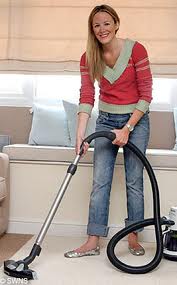

Coping with Fleas & Itchy Dogs
There are two clear signs of a flea infestation:
An itchy pet and dark specks or insects on your pet's coat
Although fleas don't live on people, they will bite us causing a range of symptoms including blistering and itchy red lumps on the skin.
Which came first, the flea or the egg?
The flea's life cycle starts out with eggs, which are laid in clusters on the host dog or cat that the fleas feed on. These eggs drop off and accumulate in places where the host spends its time. The PDSA estimates that the average pet-owner's home contains around 20,000 flea eggs at any time. Within two weeks, each egg hatches into a larva. Flea larvae burrow down to the bottom of the carpet, where they are safe and there is a plentiful supply of food in the form of dander (the flakes of skin and hair that people and pets continually shed). After a couple of weeks of fattening itself up, the larva will pupate. Pupae can stay dormant in the carpet for up to several months if it is cold, but they usually hatch within a couple of weeks in warm conditions. The moment of hatching is triggered by the heat and vibration of animals moving around nearby. When the new flea emerges, it feeds on its new host and the life cycle starts again.
Dog Flea & Tick Free Formula
This formula is a natural anti-parasitic herbal remedy and contains a range of powerful herbal ingredients.
Flea and Tick parasites are blood sucking and do harm to dogs and especially to puppies, when parasites are present daily grooming is required, this friction upsets the cycle of the parasites.
Flea collars avoid them, the chemical used is toxic and has been proven to be dangerous.
Dosage
Dust the powder on the fur and skin of the dog avoiding the eyes and the inner ear area, once a week.
2 to 3 times a week when parasites are present.
Top Tips
Herbal treatments are important, but there are additional ways to deal with fleas. Here are my top tips.
Vacuuming can catch up to 96% of adult fleas in a house.

-
Vacuum carpets and soft furnishings weekly, and the areas where your dog sleeps every day. Regular vacuuming not only removes fleas, but also the dander that flea larvae feed on.
- Use a vacuum cleaner with a beater bar on your carpets. The added vibration helps dislodge eggs and larvae. It also causes fleas to hatch, so that your cleaner can suck them up.
- Pay special attention to dark corners, carpet edges and crevices in furniture because this is where eggs and larvae lurk.
- Empty the vacuum cleaner every time you use it, so the fleas and larvae don't escape to re-infest your home.
- Regular grooming helps to remove loose hair, dander and fleas from your dog.
- Do this outside so that the eggs and larvae stay out of the house.
- Heat kills flea eggs and larvae by drying them out.
- On hot, sunny days, put your pet's bedding out on the washing line for a few hours, so that larvae and eggs dry out and die.
- Do the same with and rugs and soft furnishings that your dog sleeps on or near. Give them a good bash to knock loose any dirt and flea eggs.
Disclaimer
The views and opinions stated in this article are the author's own and are for the information of the public only.